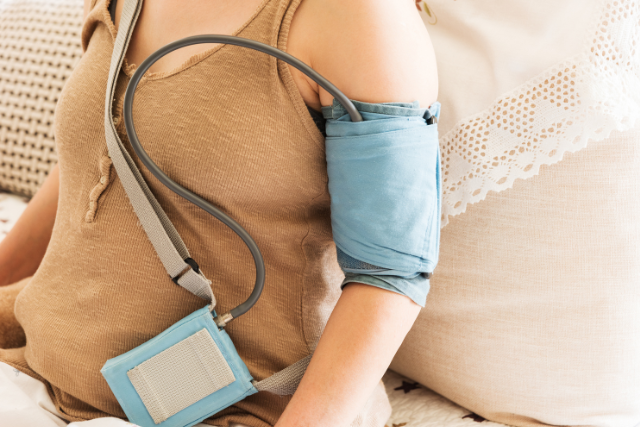Ambulatory Blood Pressure
Ambulatory Blood Pressure Monitoring (ABPM) is when your blood pressure is measured as you move around, living your normal daily life. It is measured for up to 24 hours. A small digital blood pressure monitor is attached to a belt around your waist and connected to a cuff around your upper arm. It is small enough not to affect your normal daily life and you can even sleep with it on
Why Does Your Cardiologist Advised Ambulatory BP?
There are a number of reasons why we might need this:
- To establish a diagnosis of high blood pressure (hypertension)
- To identify patients who have higher blood pressure readings when in the clinic (known as ‘white coat effect’)
- To help decide if blood pressure medication is required
- To help to decide whether any change to your medication is required

- To further investigate people whose blood pressure is hard to control
- To see how well a patient’s blood pressure medicines are controlling blood pressure throughout the day
- To see what happens to a patient’s blood pressure at night
Know the Procedure
- Preparation: You’ll visit the clinic, where a healthcare professional will set you up with a small monitor connected to a cuff that fits around your arm. They’ll ensure the monitor is securely in place and comfortable for the 24-hour period.
- Regular Activities: Once the monitor is set up, you’ll continue with your regular routine. This is the beauty of the test – you carry on with your daily life, and the monitor quietly does its job, measuring your blood pressure at set intervals.
- Activity Diary: Some clinics may ask you to maintain an activity diary, noting down specific activities or symptoms experienced during the monitoring period. This record can provide additional context for the cardiologist when interpreting the results.
- Monitor Removal: After the 24-hour period is up, you’ll return to the clinic to have the monitor removed. The data collected will then be analyzed by your cardiologist.
Turnaround Time for the Report
After the 24-hour monitoring period, it typically takes around a day or two to compile the results and get them to your cardiologist. They’ll review the findings and discuss them with you, ensuring you understand what the numbers and data mean for your heart health. So, not a long wait—it’s quick enough to put your mind at ease or start any necessary action.
